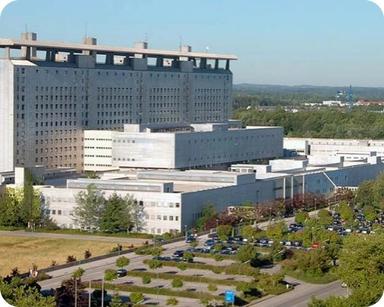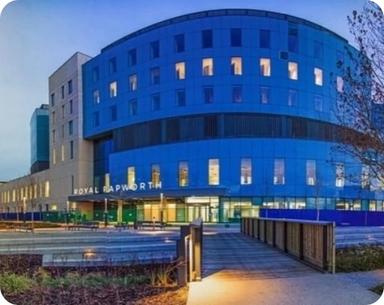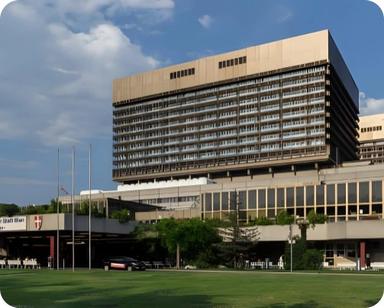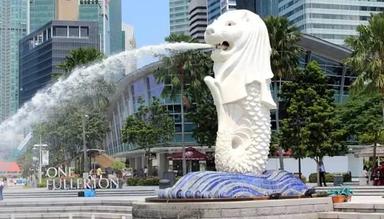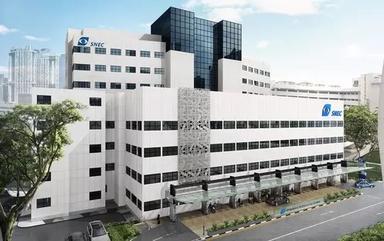الحزم تبدأ من
$8000
هل تحتاج إلى مساعدة في اختيار الحزمة المناسبة لرحلتك الطبية؟
بياناتك الصحية محمية معنا
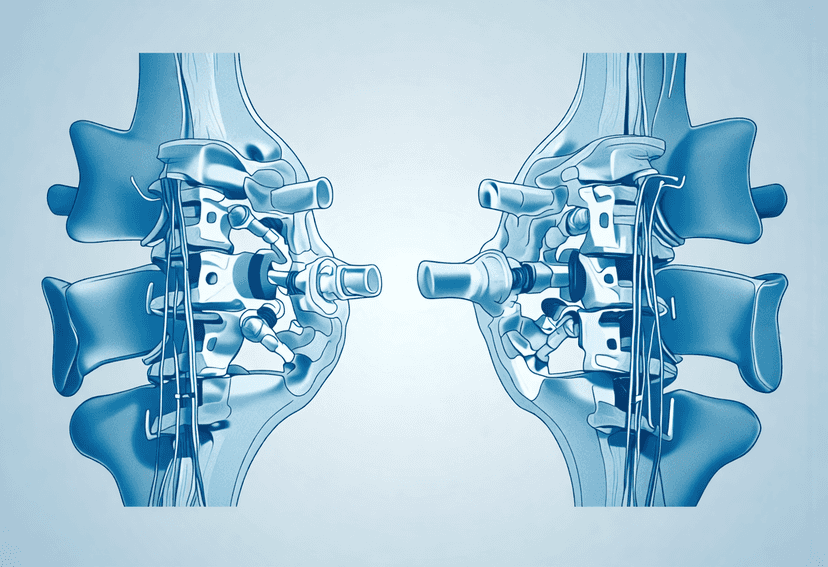
تحويل الحياة بـ تخفيف الضغط الجراحي وتثبيت العمود الفقري
إن تخفيف الضغط الجراحي المجهري وتثبيت العمود الفقري هو أسلوب جراحي دقيق يستخدم لتخفيف الضغط على أعصاب العمود الفقري وتثبيت العمود الفقري، خاصة في المرضى الذين يعانون من حالات مثل تضيق العمود الفقري، أو الأقراص المنفتقة، أو أمراض القرص التنكسية التي تسبب ضغط الأعصاب وعدم استقرار العمود الفقري.
نظرة عامة على الإجراء:
- تخفيف الضغط الجراحي المجهري: تتضمن هذه التقنية استخدام أدوات الجراحة المجهرية المتخصصة ومجهر التشغيل أو تقنية التصوير المتقدمة الأخرى لتعزيز الرؤية أثناء الجراحة. يزيل الجراح بعناية كميات صغيرة من العظام أو مادة القرص الفتق أو الأربطة المتضخمة التي تضغط على الأعصاب. الهدف هو تخفيف الألم واستعادة الوظيفة مع تقليل تعطيل الأنسجة المحيطة.
- تثبيت العمود الفقري: بعد إلغاء الضغط ، غالبًا ما يكون تثبيت العمود الفقري ضروريًا للحفاظ على استقرار العمود الفقري ومحاذاة. يتضمن هذا الجزء من الجراحة إدخال أجهزة مثل البراغي والقضبان. تساعد هذه الغرسات على الاحتفاظ بالفقرات في الوضع الصحيح ومنع المزيد من الحركة التي قد تؤدي إلى ضغط أعصاب إضافي.
فوائد:
- الدقة والحد الأدنى من التدخل: تسمح تقنيات الجراحة المجهرية باستهداف المناطق المصابة بدقة مع الحد الأدنى من الشقوق، مما يؤدي إلى تقليل تلف الأنسجة وتقليل الألم وأوقات تعافي أسرع.
- تعزيز الاستقرار: يوفر التثبيت استقرارًا فوريًا للعمود الفقري، مما يسهل عملية الشفاء الطبيعية ويمنع المزيد من التغيرات التنكسية.
استعادة:
- يعاني المرضى عادة من تعافي أسرع بسبب الطبيعة الغازية للجراحة الحد الأدنى. يتضمن الانتعاش العلاج الطبيعي لتعزيز الظهر وتحسين التنقل ، مع استئناف معظم المرضى تدريجيا الأنشطة الطبيعية.
- يمكن أن يختلف طول فترة التعافي اعتمادًا على مدى تعقيد الجراحة والصحة العامة للمريض، ولكنه يتضمن بشكل عام عدة أسابيع من إعادة التأهيل.
النتائج:
- يعتبر تخفيف الضغط والتثبيت بالجراحة المجهرية فعالين للغاية في تقليل الأعراض مثل الألم والخدر والضعف. كما أنه يساعد في الحفاظ على محاذاة العمود الفقري ومنع مشاكل العمود الفقري في المستقبل.
- النتائج طويلة الأجل إيجابية بشكل عام ، حيث يعاني المرضى من تحسينات كبيرة في التنقل ونوعية الحياة.
تم تصميم هذا النهج الجراحي المشترك لمعالجة كل من الأعراض الفورية والأسباب الكامنة لضغط العصب الشوكي وعدم الاستقرار ، مما يوفر حلاً شاملاً للمرضى الذين يعانون من حالات الشوكة المنهكة.
5.0
91% مصنف قيمة مقابل المال
لماذا تختارونا؟
95%
معدل النجاح
0
تخفيف الضغط الجراحي وتثبيت العمود الفقري الجراحين
0
تخفيف الضغط الجراحي وتثبيت العمود الفقري
0
المستشفيات في جميع أنحاء العالم
0
الحياة التي تم لمسها
نظرة عامة
إن تخفيف الضغط الجراحي المجهري وتثبيت العمود الفقري هو أسلوب جراحي دقيق يستخدم لتخفيف الضغط على أعصاب العمود الفقري وتثبيت العمود الفقري، خاصة في المرضى الذين يعانون من حالات مثل تضيق العمود الفقري، أو الأقراص المنفتقة، أو أمراض القرص التنكسية التي تسبب ضغط الأعصاب وعدم استقرار العمود الفقري.
نظرة عامة على الإجراء:
- تخفيف الضغط الجراحي المجهري: تتضمن هذه التقنية استخدام أدوات الجراحة المجهرية المتخصصة ومجهر التشغيل أو تقنية التصوير المتقدمة الأخرى لتعزيز الرؤية أثناء الجراحة. يزيل الجراح بعناية كميات صغيرة من العظام أو مادة القرص الفتق أو الأربطة المتضخمة التي تضغط على الأعصاب. الهدف هو تخفيف الألم واستعادة الوظيفة مع تقليل تعطيل الأنسجة المحيطة.
- تثبيت العمود الفقري: بعد إلغاء الضغط ، غالبًا ما يكون تثبيت العمود الفقري ضروريًا للحفاظ على استقرار العمود الفقري ومحاذاة. يتضمن هذا الجزء من الجراحة إدخال أجهزة مثل البراغي والقضبان. تساعد هذه الغرسات على الاحتفاظ بالفقرات في الوضع الصحيح ومنع المزيد من الحركة التي قد تؤدي إلى ضغط أعصاب إضافي.
فوائد:
- الدقة والحد الأدنى من التدخل: تسمح تقنيات الجراحة المجهرية باستهداف المناطق المصابة بدقة مع الحد الأدنى من الشقوق، مما يؤدي إلى تقليل تلف الأنسجة وتقليل الألم وأوقات تعافي أسرع.
- تعزيز الاستقرار: يوفر التثبيت استقرارًا فوريًا للعمود الفقري، مما يسهل عملية الشفاء الطبيعية ويمنع المزيد من التغيرات التنكسية.
استعادة:
- يعاني المرضى عادة من تعافي أسرع بسبب الطبيعة الغازية للجراحة الحد الأدنى. يتضمن الانتعاش العلاج الطبيعي لتعزيز الظهر وتحسين التنقل ، مع استئناف معظم المرضى تدريجيا الأنشطة الطبيعية.
- يمكن أن يختلف طول فترة التعافي اعتمادًا على مدى تعقيد الجراحة والصحة العامة للمريض، ولكنه يتضمن بشكل عام عدة أسابيع من إعادة التأهيل.
النتائج:
- يعتبر تخفيف الضغط والتثبيت بالجراحة المجهرية فعالين للغاية في تقليل الأعراض مثل الألم والخدر والضعف. كما أنه يساعد في الحفاظ على محاذاة العمود الفقري ومنع مشاكل العمود الفقري في المستقبل.
- النتائج طويلة الأجل إيجابية بشكل عام ، حيث يعاني المرضى من تحسينات كبيرة في التنقل ونوعية الحياة.
تم تصميم هذا النهج الجراحي المشترك لمعالجة كل من الأعراض الفورية والأسباب الكامنة لضغط العصب الشوكي وعدم الاستقرار ، مما يوفر حلاً شاملاً للمرضى الذين يعانون من حالات الشوكة المنهكة.


